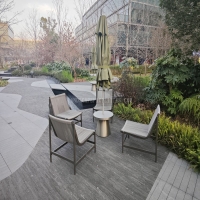Welcome to the website for landscape facilities products and knowledge.
What are the key considerations for placing the bin in high-traffic versus low-traffic areas?
Effective bin placement is crucial for maintaining cleanliness and efficient waste management in both high-traffic and low-traffic areas. Here are the key considerations for each scenario:
High-Traffic Areas:
1. Accessibility: Bins should be placed in visible, easily reachable locations to encourage usage and prevent littering.
2. Capacity: Larger bins or higher bin density are needed to handle the increased volume of waste.
3. Durability: Sturdy, vandal-resistant materials are essential to withstand heavy use and potential misuse.
4. Frequency of Emptying: More frequent collection is required to prevent overflow and odors.
5. Aesthetics: Bins should blend with the surroundings while remaining functional.
Low-Traffic Areas:
1. Strategic Placement: Fewer bins are needed, but they should still cover key spots like entrances or seating areas.
2. Smaller Size: Compact bins suffice due to lower waste generation.
3. Maintenance: Less frequent emptying is acceptable, but regular checks are still important.
4. Cost-Effectiveness: Opt for simpler, budget-friendly designs without compromising functionality.
5. Wildlife Protection: Secure lids may be necessary to prevent animals from scattering waste.
Balancing these factors ensures efficient waste management while keeping public spaces clean and user-friendly.
Related search:

Recommendation
Metal structure rattan chair without armrests for single person, with woven seat and backrest.